The identity crisis facing Birmingham’s Digbeth
Unlike when Sean T Smith grew up in the city, Digbeth has become a scene for craft beer and vintage clothes – but even that is now at risk as the mainstream smells money


All eyes have been on Birmingham for the last few weeks, as it hosted the Commonwealth Games – with residents really embracing the sporting contest. It has also given visitors and viewers alike a sense of a number of areas around the surrounding region, and inspired many to take a proper look at the rest of the second city (although Manchester might have something to say about that particular moniker).
In its industrial prime when Birmingham was “the city of a thousand trades”, Digbeth, in the east of the city, was a workshop to the world. Now it’s home to the city’s hip creative quarter. With its central location and wealth of handsomely distressed warehouses, factories and archways, Digbeth was always going to be ripe for development. The prospect of a high-speed rail connection to the capital is simply accelerating that process.
As an Irish ward in the inner city – that’s also set to become another notch on London’s commuter belt – it’s little wonder that Digbeth seems to be in the throes of an identity crisis.
If being just a stone’s throw from the second city’s centre wasn’t enough to excite property developers, the new HS2 station at nearby Curzon Street will effectively put Digbeth just 49 minutes away from central London.
The area has been officially “happening” for quite some time now, but I didn’t realise the extent of its hipness until I found myself at Dead Wax in the back streets of Digbeth. Dead Wax is an edgy craft beer bar known for its live music and (mostly) vinyl DJ sets. The exposed brick walls are lined with hundreds of vinyl albums that customers can take down and play. The overall vibe is underground industrial chic; it’s very hip.
Even its name is cool. Assistant manager, Ben Thomas explains that the name Dead Wax is derived from the detritus that builds up on a stylus needle from the repeated playing of vinyl records. Ben is very cool too – in fact, with his beany hat, checked shirt and beard, it’s hard to see how Ben could look more like the traditional hipster.
Evidently, being a hipster isn’t cheap. My craft ale sets me back an eye-watering £6.15. Hipsters seem to me to have an aversion to serving or drinking anything mainstream.
“I don’t think we’d ever stock something like Carling or Coors. It changes the crowd you bring in – I believe that,” says Ben.
Although Ben’s parents are originally from Birmingham, they moved to Shrewsbury to raise their family and were initially shocked to learn that he’d agreed to help run a pub in the back streets of Digbeth.
“My dad grew up in Birmingham. He talks of Digbeth as a tough, hard-drinking place. The sort of place he would never dream of going when he was young.”
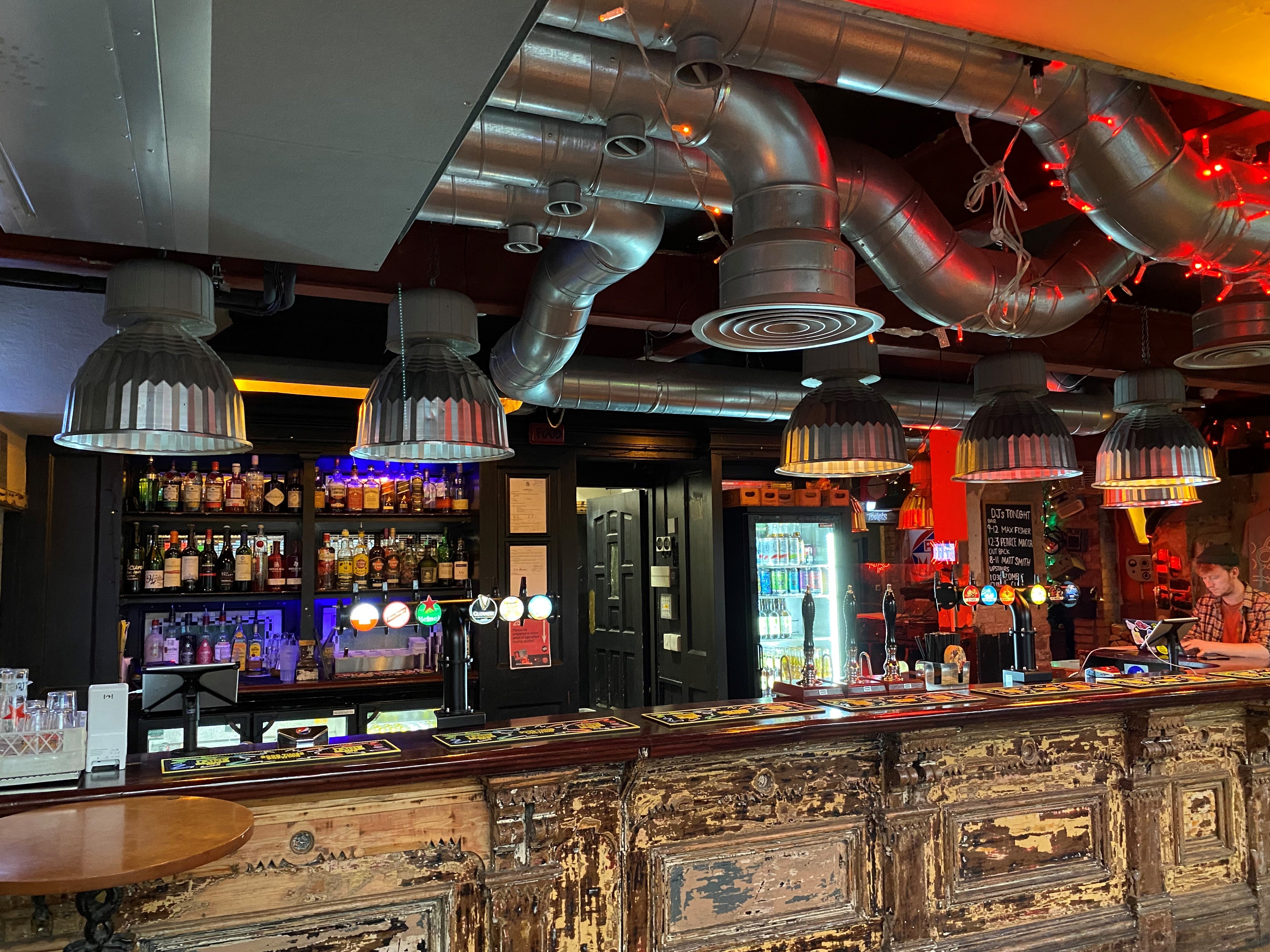
I remember it well. The Digbeth of my youth was a gritty world of old-school backstreet Irish boozers where you could disappear into all-day drinking sessions with friends that would leave you nursing cataclysmic hangovers. Great days! I calculate that Ben’s dad must be roughly my age, then suddenly realise that I was almost certainly the sort of degenerate drunk he was trying to avoid.
Gentrification’s natural law seems to dictate that interesting people flock to interesting places and Dead Wax is just one of the many vibrant night spots that have sprung up in a clustered orbit around the gravitational pull exerted by Digbeth’s famous Custard Factory.
The Custard Factory has long been the cultural epicentre of the new Digbeth, sending out its coolness in waves. Formerly the home of Bird’s custard powder – but derelict since 1964 – the imposing seven-story complex has been incubating Digbeth’s quirky independent scene since its redevelopment in the 1990s.
It’s all a little overwhelming, I confide in my guide Louis – yes, my teenage hipster son has agreed to steer me through Birmingham’s hippest quarter
Dead Wax is just round the corner from Digbeth’s gentrifying ground zero. As I make my way there, through Digbeth’s formerly mean streets I can see that Ben’s parents needn’t worry; the air of menace has gone, Digbeth is now quite the middle-class enclave.
Now the nearby streets and archways are home to craft beer drinking dens, industrial-style taprooms, warehouses packed with art, live music and gastro pubs specialising in “small plate” cuisine. Clothes shops market themselves as “streetwear concept stores”.
The Custard Factory’s courtyard is currently home to The Mockingbird, a bar and independent cinema where film lovers congregate to watch and discuss edgy films.
There’s also Stag: a barber shop that doubles as a café and even more confusingly trebles as a cocktail bar. Getting a skin fade is very much a social experience. I’m intrigued by their “DJ session with DJs and barbers trimming and spinning at the same time.”
It’s all a little overwhelming, I confide in my guide Louis – yes, my teenage hipster son has agreed to steer me through Birmingham’s hippest quarter desperately hoping not to be spotted with his hopeless dad. Louis is convinced that he is cool; in truth, I’m losing faith in my ability to judge.
Chance and Counters looks more my speed. It’s a cafe that combines “drinking, dining and gaming”, where friends can meet up and socialise over the 500 different board games.

Birmingham is reckoned to have the youngest population in Europe but compared to cities like Manchester and Leeds until recently it had relatively little to offer in terms of nightlife.
When weekend revellers spill out of their trains at Grand Central station most used to head west towards the brash bright lights of the soulless chain pubs and restaurants in and around Birmingham’s Broad Street.
But now from 5pm on a Thursday, the more discerning Brummie heads east and takes the short downhill stroll to Digbeth.
The Digbeth hipster doesn’t necessarily sport a bushy beard and braces but they still form a highly visible subculture. Vintage clothing stores thrive in this part of town.
Operating since 2005, Cow Vintage on Digbeth High Street is one of the most well-established.
“Digbeth has changed around us,” says manager, Abby Beesley. “It’s become a very trendy place with the price of properties going up and up.”
Like the retro clothes it stocks, the Cow Vintage premises epitomise the hipster paradox: socially progressive but fascinated by nostalgia.
The shop is housed in a former canal barge repair workshop. Its rear entrance is a slipway slope. Narrowboats were hoisted up to the high ceilings so that keel repairs could be performed and the chains from which they were suspended still hang from steel beams.
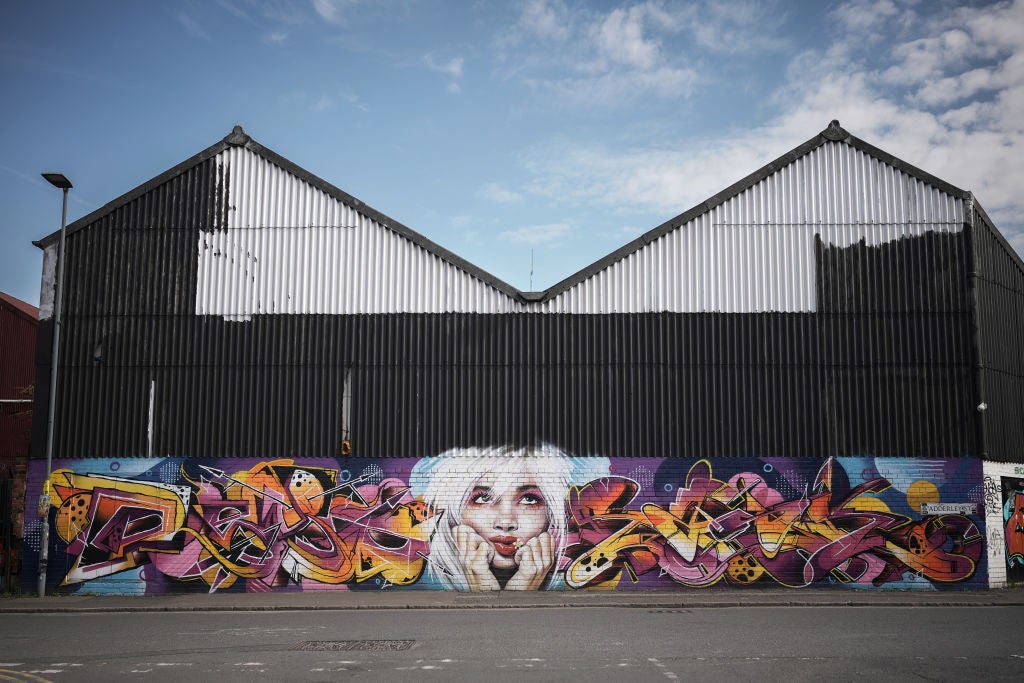
Like Ben Thomas, Abby Beesley also describes her customers as “edgy”.
“People around here are into sustainability and recycling and care about that now,” she says. “They wear a lot of vintage gear and wouldn’t think of shopping somewhere like Primark.”
Cow Vintage carries a vast amount of stock: from utilitarian heritage outdoor brands to retro T- shirts and distressed denim. Some have been reworked through a sewing machine to put a new twist on an old classic.
Abby thinks she’s most likely to see the store’s vintage clothes in venues around the Custard Factory. The Night Owl is her own personal favourite: it’s a popular live music venue for local bands and also specialises in Northern Soul.
She’s proud to be part of such a vibrant scene, particularly the way it coexists with its roots.
“The Irish community is living alongside everything else that’s going on. It’s still a massive part of Digbeth,” says Abby.
Digbeth had been home from home for Birmingham’s Irish community for 150 years.
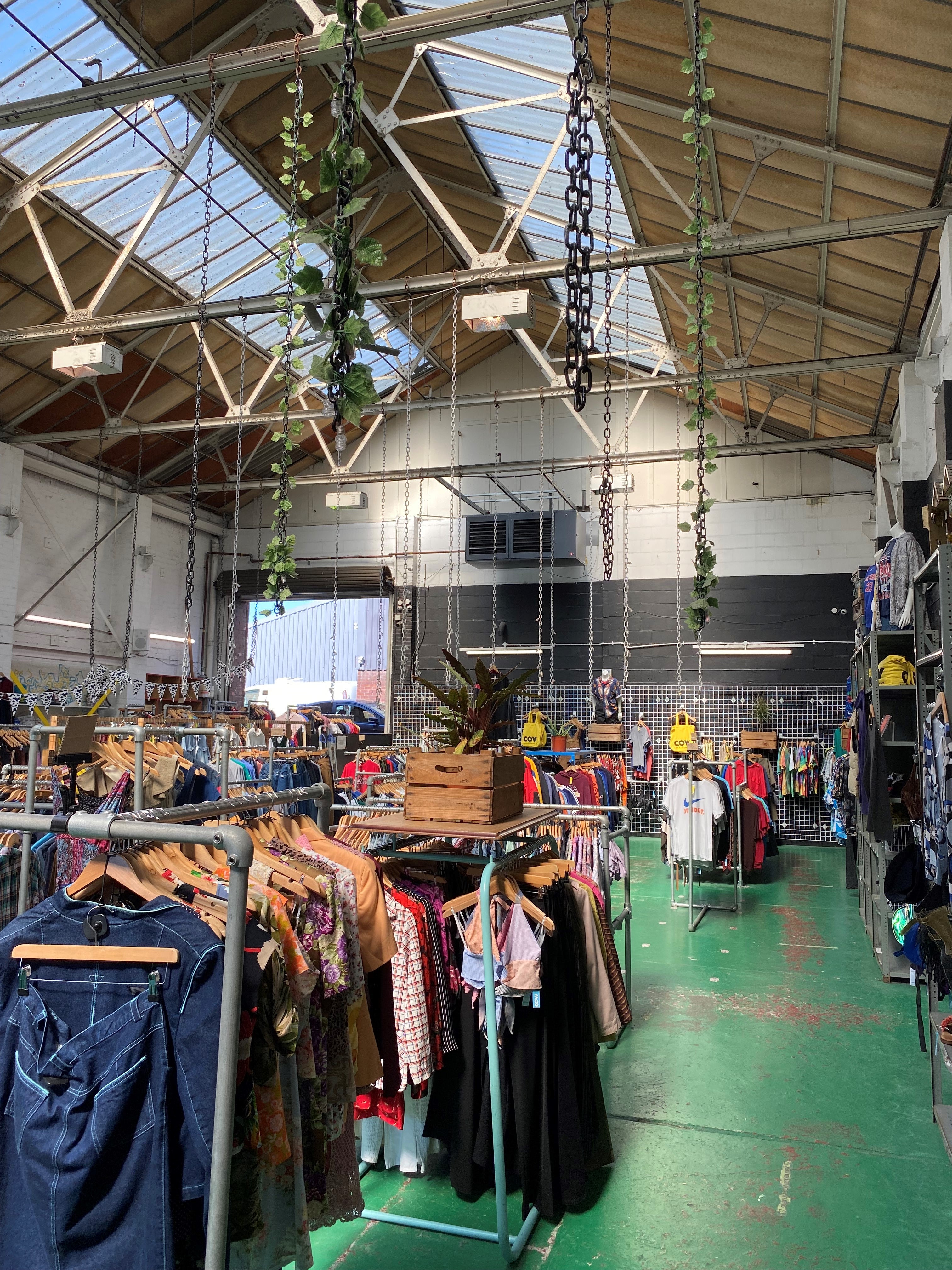
Gentrification has a reputation for displacing working-class communities, forcing them out of newly fashionable areas as rent and living costs invariably rise.
But that doesn’t seem to be the case here because Digbeth hasn’t really been much of a residential area for decades. Most of the terraced housing was abolished in slum clearances before the 1950s.
Instead, Birmingham’s Irish community existed as a social network underpinned by the Digbeth Irish Centre and a cluster of family-run pubs. The Irish centre was a vast social club and advice centre connecting Irish immigrants from across the city.
When Digbeth’s Irish centre moved out to Kings Heath in 2019, the loss of its central location was a real blow. And Digbeth’s remaining Irish community is struggling to keep pace with a rejuvenated Digbeth.
At the moment Digbeth’s high street is partially closed while work is being completed on the tram metro link – an integrated transport system that will link Digbeth to Grand central station and the vast new HS2 “superstructure” station at Curzon street. When it’s finished, Digbeth’s late Victorian raffish charm will glide seamlessly and belatedly into the 21st century of glass and steel.
But meanwhile, Digbeth High Street looks like it’s undergoing open heart surgery. For the Irish pubs near the high street that depend on passing trade, it hasn’t been easy.
Digbeth’s vibrant and authentic scene is worth experiencing now while you still can. Because real money is coming to Digbeth – the kind of serious money you can smell in the air
Hennessy’s is still doing well but perhaps that’s because it’s somehow managing to be all things to all people. Part Irish-themed party bar, part sports bar it also offers a hipster-friendly “small plate” menu with side orders of toasted ciabatta, while playing tracks like Spanish Sahara by Foals. Depending on your point of view it’s either an interesting hybrid fusion of styles or a full-blown identity crisis.
Liam O’Connor, is now in his seventies and after a 27-year stint as the landlord of the Kerryman on Digbeth high street, he is feeling his age.
On a sweltering Friday afternoon, we take refuge at the back of the vast bar to be near the air conditioning unit. In the 1990s, the place would have been packed but now, unfortunately, we have the place to ourselves.
“Regulars and passing trade are the lifeblood of the pub industry. It’s what made it a great little business but not any more,” he says.
O’Connor feels the loss of the Irish centre very keenly and feels that the Irish community is in retreat.
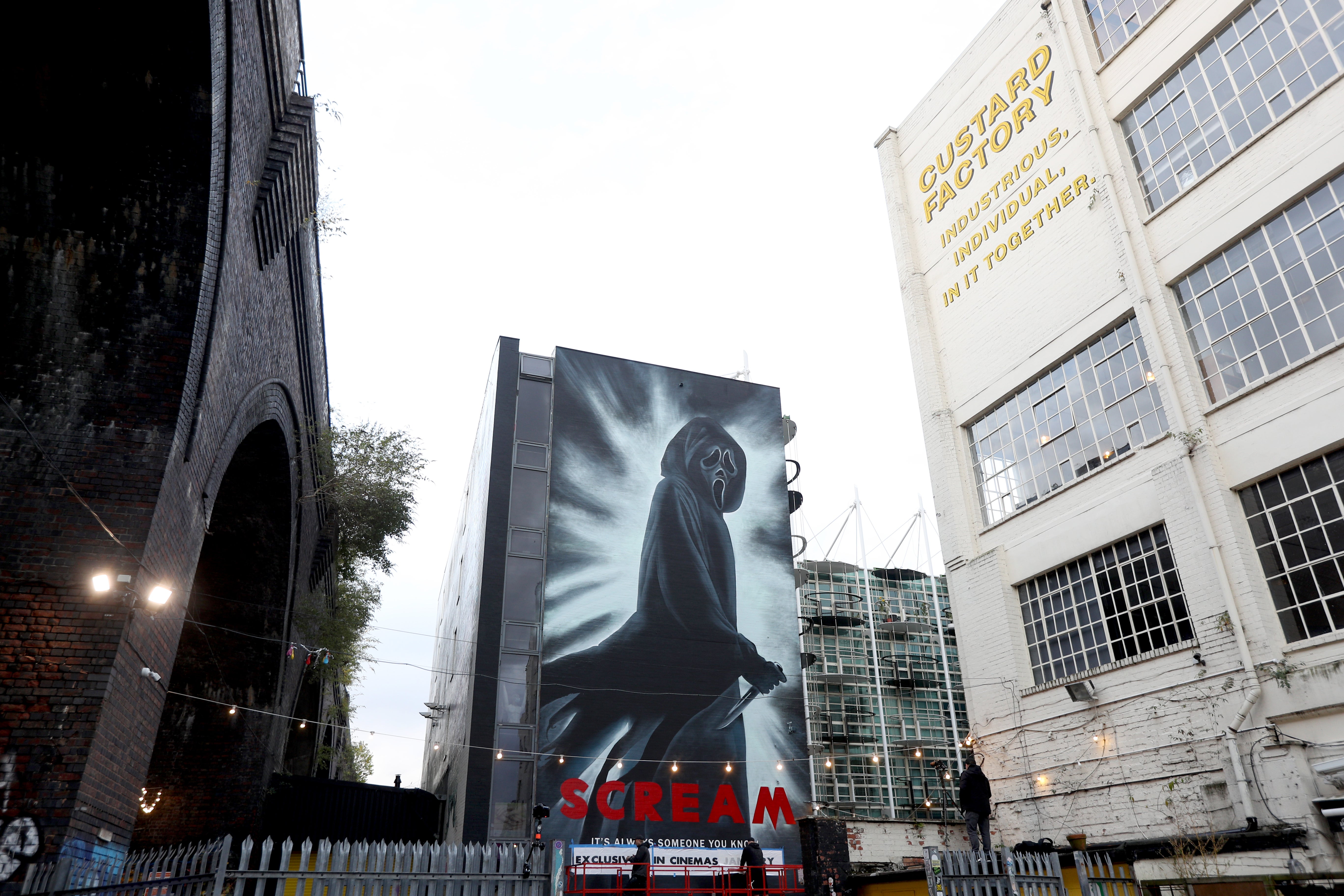
Digbeth is famously the home of the largest St Patrick’s day parade in the UK but because of Covid-19 and now the disruption caused by the metro link there hasn’t been one since 2019. Liam O’ Connor is beginning to wonder if there will ever be another one.
On the other side of the high street, The White Swan is in an even greater predicament. In the 1980s, it was a thriving pub and the beating heart of Birmingham’s Irish community. Marooned too far away from the re-energising glow of The Custard Factory, this Grade II listed late-Victorian beauty of a pub is a time capsule living on borrowed time.
It was forced to close in 2019, but was reopened in 2021 by a local publican who couldn’t bear to see it lying idle. But now – even though it’s been lovingly restored, with new hand pumps. leaded lights and French polish – it’s almost entirely devoid of customers.
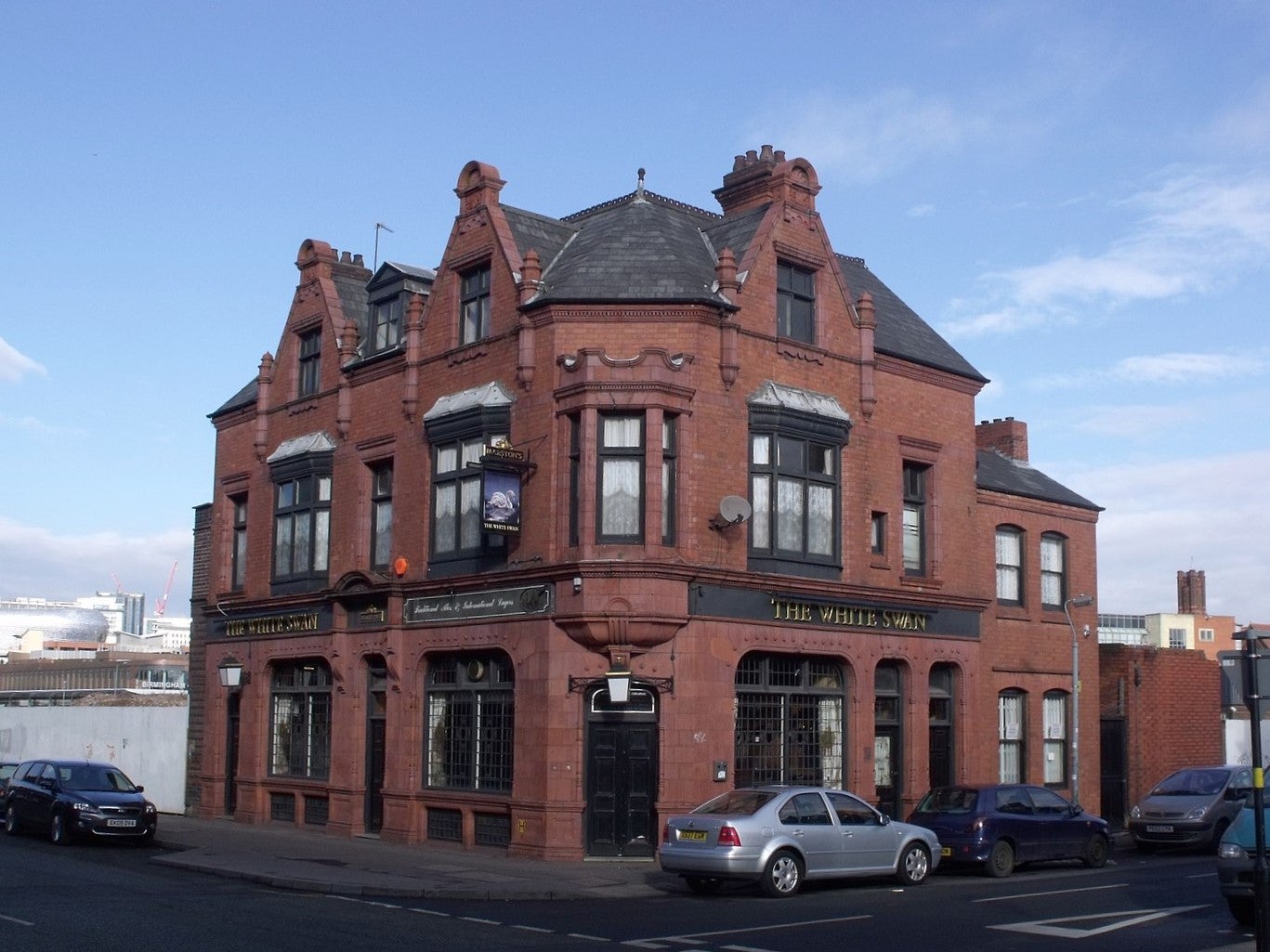
When an area as vast as Digbeth starts to regenerate, inevitably pockets of the community will be left behind.
The absence of quaint, residential period properties is one of the reasons why Digbeth is such prime real estate for the developers planning to populate the wide open spaces around the Curzon street site with imposingly sleek apartment complexes.
In 2021, Birmingham city council’s planning committee gave a team of developers permission to regenerate an enormous swathe of post-industrial land to the east of Birmingham’s city centre.
West Midlands mayor Andy Street was among those to welcome the planning decision, saying “what is happening in Digbeth is truly transformational”.
It will be. Digbeth’s vibrant and authentic scene is worth experiencing now while you still can. Because real money is coming to Digbeth – the kind of serious money you can smell in the air.
It’s already starting to seep into the area around The Custard Factory. At Dead Wax, Ben senses that some of the newer bars and clubs would be better suited to Broad Street. It’s almost as if the mainstream senses the opportunity to make a killing there while Digbeth is still underground and cool. So enjoy it while you can. Because the future is coming to Digbeth and one day soon, it will be closed off behind steel and glass.
Join our commenting forum
Join thought-provoking conversations, follow other Independent readers and see their replies
Comments



Bookmark popover
Removed from bookmarks